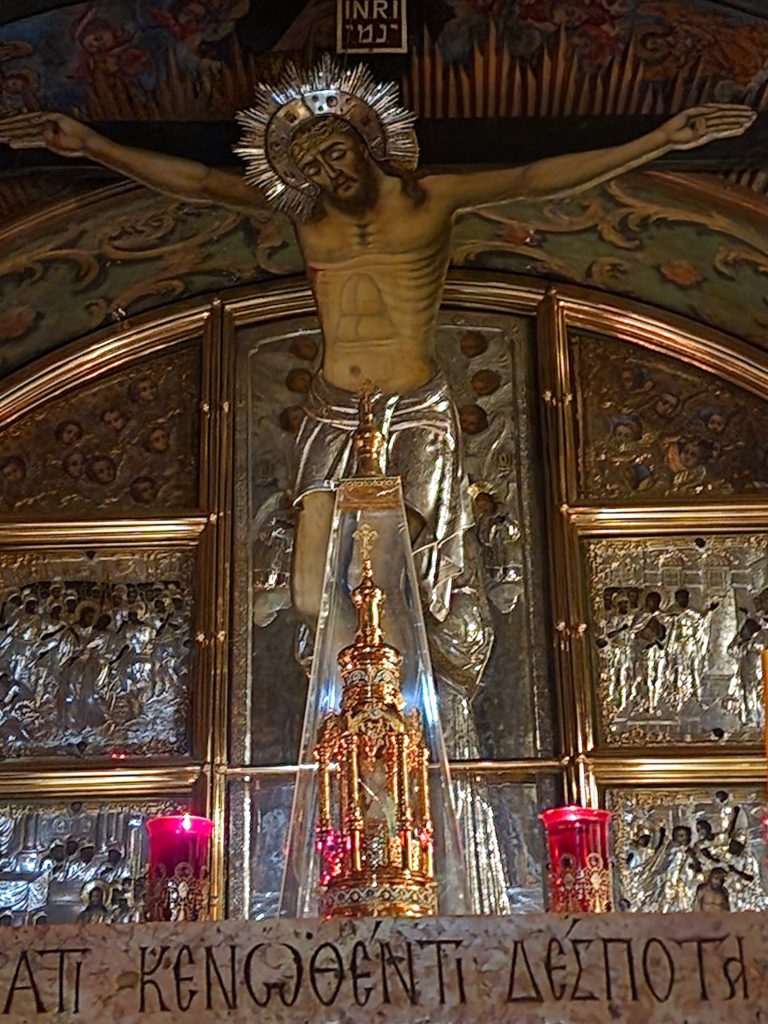The Orthodox Hierarchical Divine Liturgy is a central part of the Orthodox Christian faith, and is a time for believers to come together and pray, to hear the Word of God, and to partake in the Holy Eucharist. When served on Golgotha at the Holy Sepulchre, this liturgy takes on a particularly special meaning, as it is held at the site where Jesus Christ was crucified, buried, and resurrected.
The Hierarchical Liturgy is led by an Orthodox archbishop, in this case, Archbishop Aristarchos, who presides over the ceremony with great solemnity and reverence. The archbishop is assisted by other clergy, including deacons and priests, who play a vital role in the liturgy
The Hierarchical Divine Liturgy begins with the singing of hymns and prayers, as the archbishop and other clergy process onto Golgotha. The faithful follow behind, entering the area with reverence and respect, bowing before Golgotha as they pass.
The highlight of the Hierarchical Divine Liturgy is the consecration of the bread and wine, which are transformed into the body and blood of Christ through the power of the Holy Spirit. This sacred rite, known as the Eucharist, is a central part of the Liturgy and is considered a means of grace for believers. archbishop and other clergy offer incense and make the sign of the cross.
As the liturgy comes to a close, the archbishop gives a final blessing to the congregation, and the faithful leave the church with a sense of peace and joy in their hearts, knowing that they have been in the presence of God and have received his grace through the sacred rite of the Eucharist.
The Orthodox Hierarchical Divine Liturgy served on Golgotha at the Holy Sepulchre is a truly powerful and moving experience, and one that is sure to stay with believers for a lifetime. Led by an Orthodox archbishop such as Aristarchos, it is a testament to the enduring strength and beauty of the Orthodox Christian faith.

